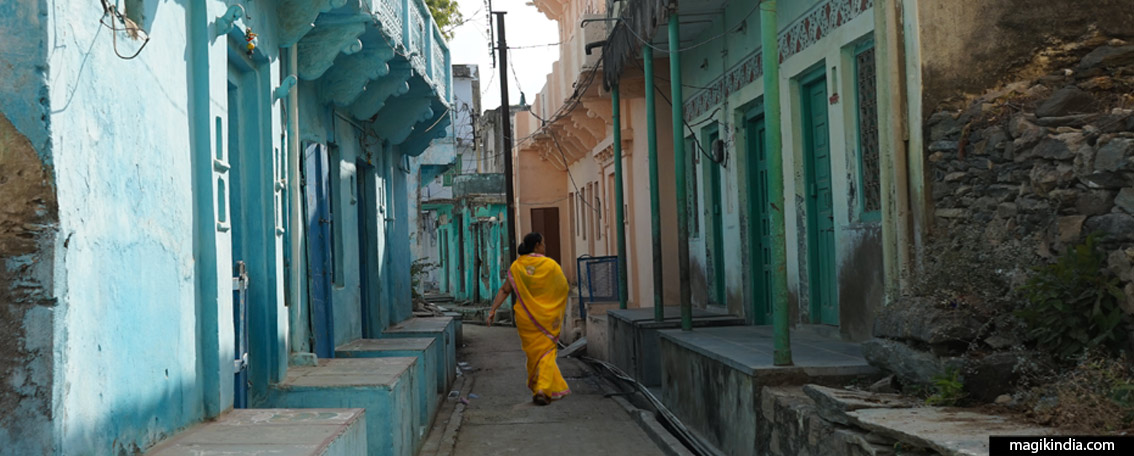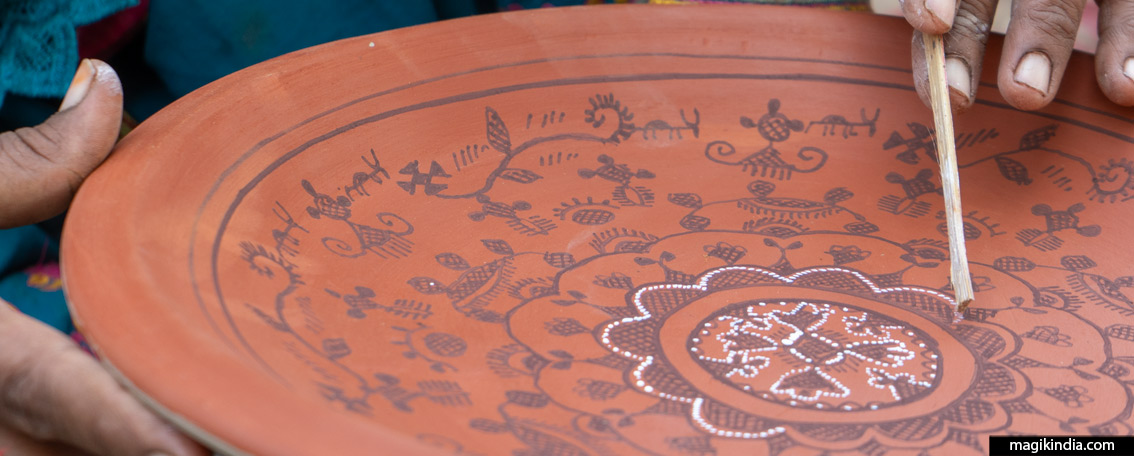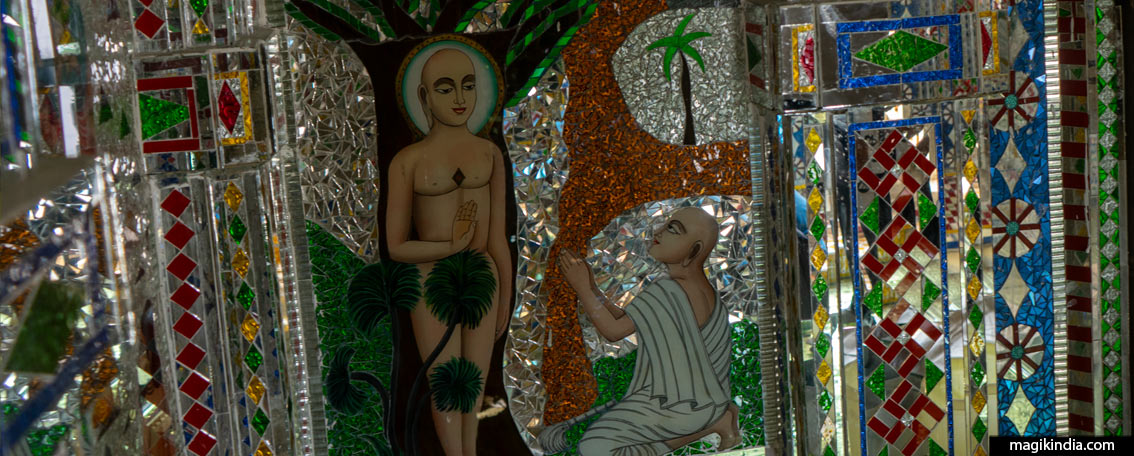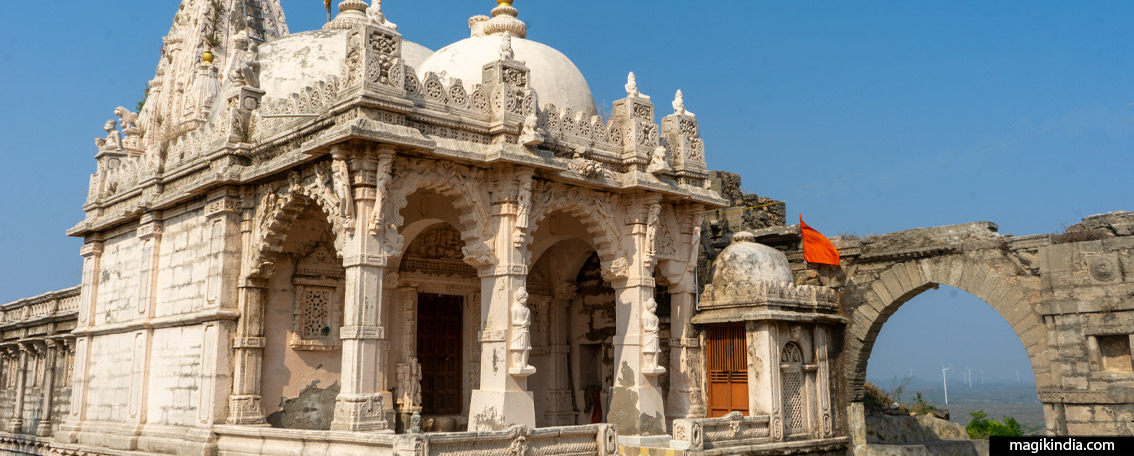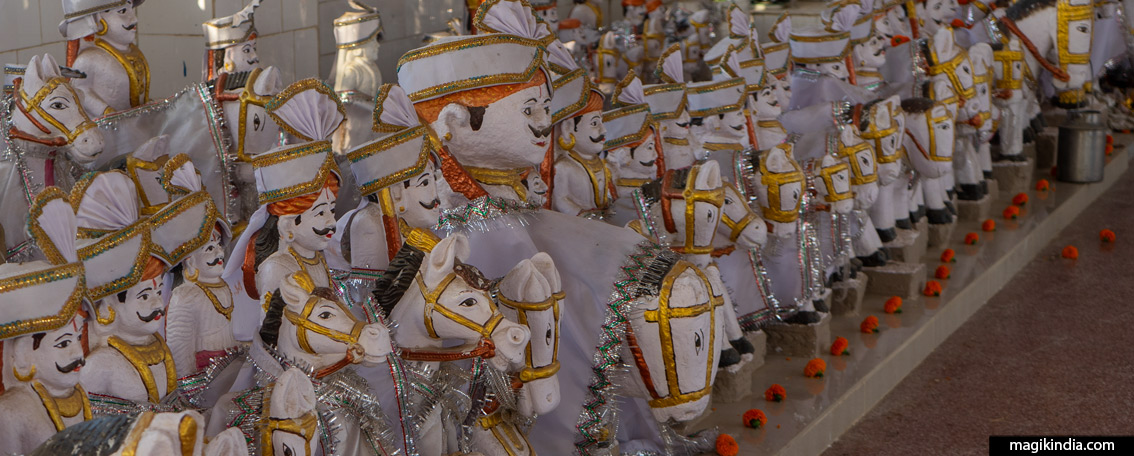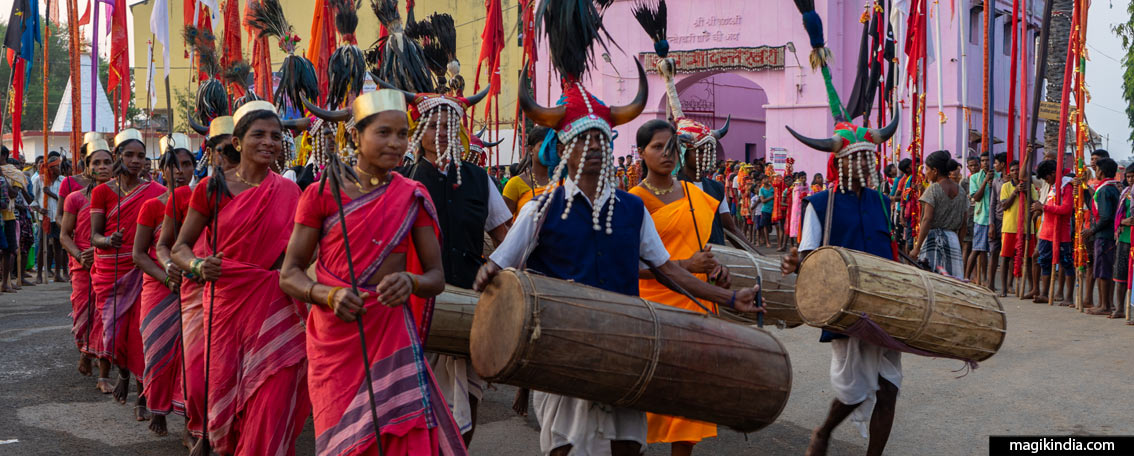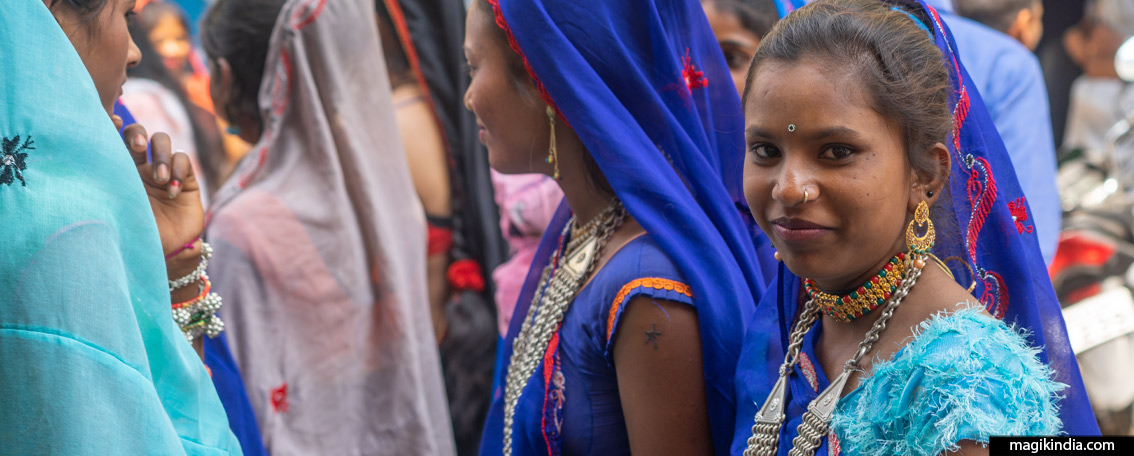
Bhagoria, the spring festival of the Rathwas
Recently declared a “cultural heritage” of Madhya Pradesh, Bhagoria is a festival that not only celebrates the arrival of spring and the end of harvest, but also love! It is indeed known for its “vivaah mela”, its marriage fair. Bhagoria falls during the Hindu month of Phalgun (February/March), seven days before the Holi festival and it is celebrated enthusiastically by the Adivasi Rathwa and Bhil people
The origin of the Bhagoria Festival
The festival of “Bhagoria” is said to derive its name from the word “Bhag”, which literally means to run away. It alludes to that Rathwa and Bhil tradition where a young man runs away with his beloved to officialise their love. The lovers then remain hidden until their families consent to their union and consider them married.
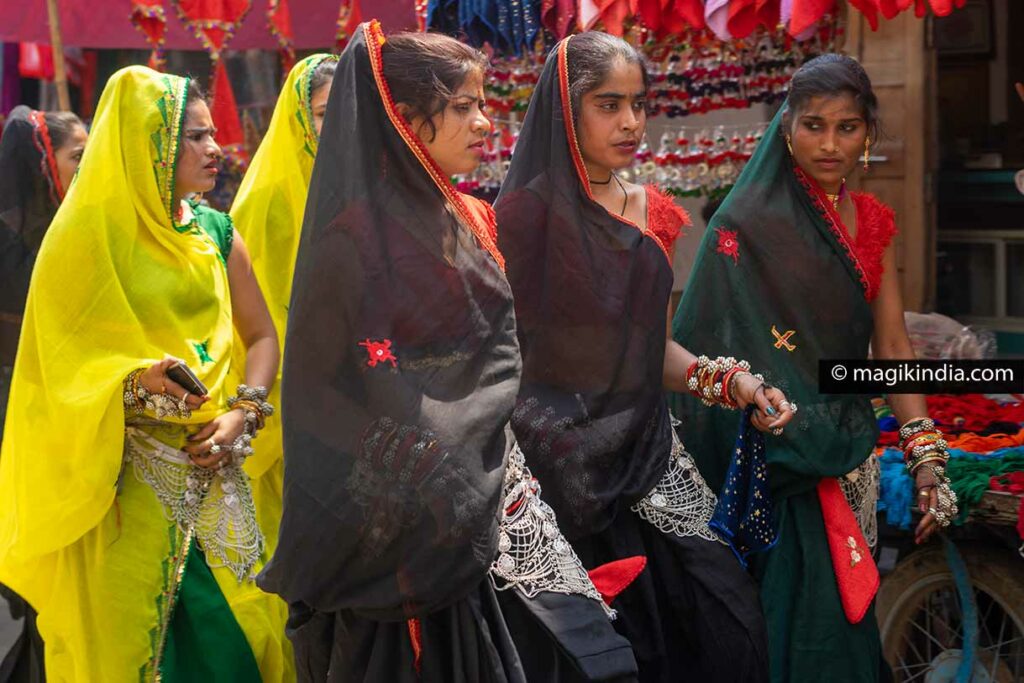
In a country dominated by arranged marriages, choosing a partner without the prior consent of the family is rare. Yet it is a common fact to many indigenous people in India. It is found in particular among the Garasia, the Bhil and the tribes of Chhattisgarh such as the Muria, the latter even having collective dormitories (ghotul) for young adults to “learn about life”.
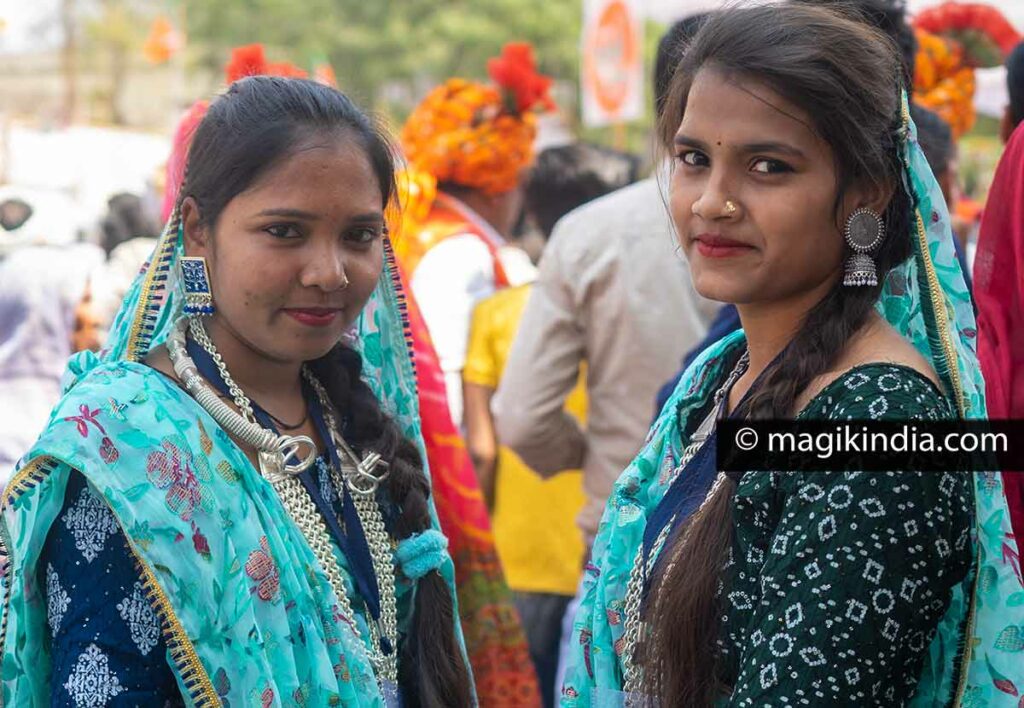
A legend also tells that Bhagoria is related to the Hindu deities Shiva (Bhav) and Parvati (Gauri) who were the first couple of this festival.
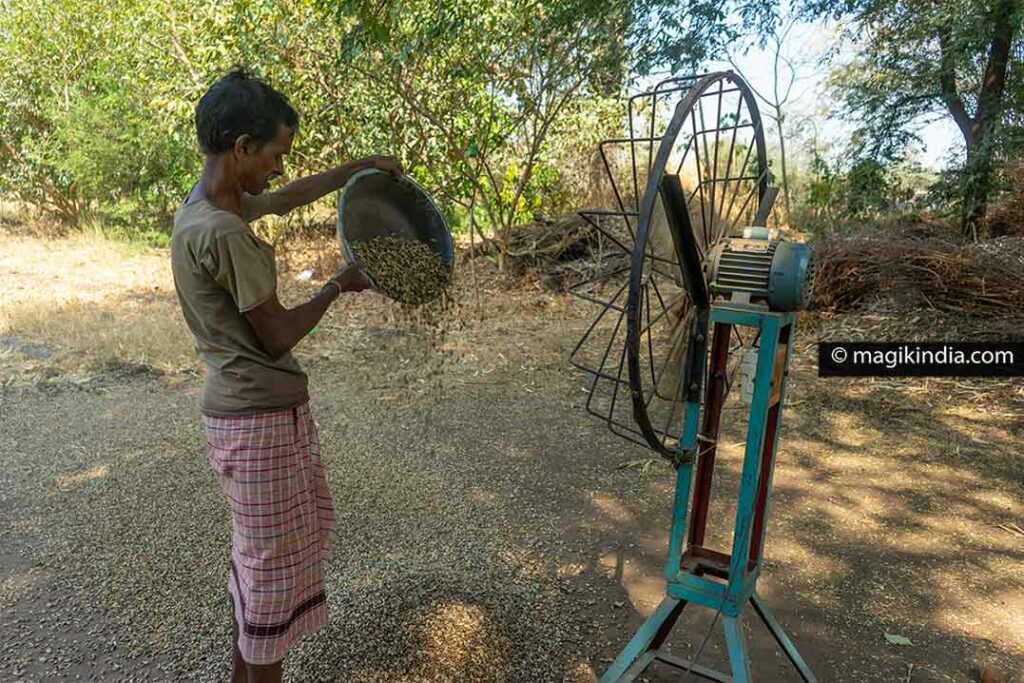
Bhagoria also celebrates the end of the harvest, as another popular story suggests: it is said that in the 13th century, a Bhil king named of Bhagga Nayak used to organize grand festivities after the harvest, in the village of Bhagor (hence the name Bhagoria), located in Jhabua district. This tradition would have continued until our days.
The festivities
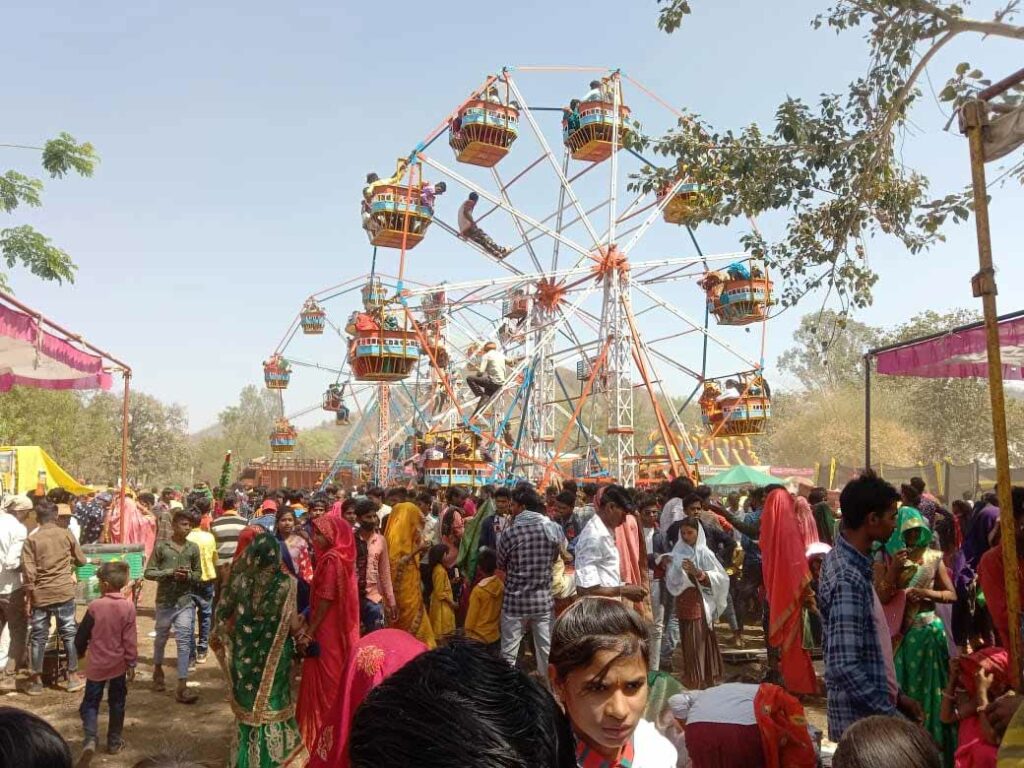
The festival is held for seven days in several villages located in different regions of Madhya Pradesh: Jhabua, Dhar, Alirajpur, Barwani and Khargone.
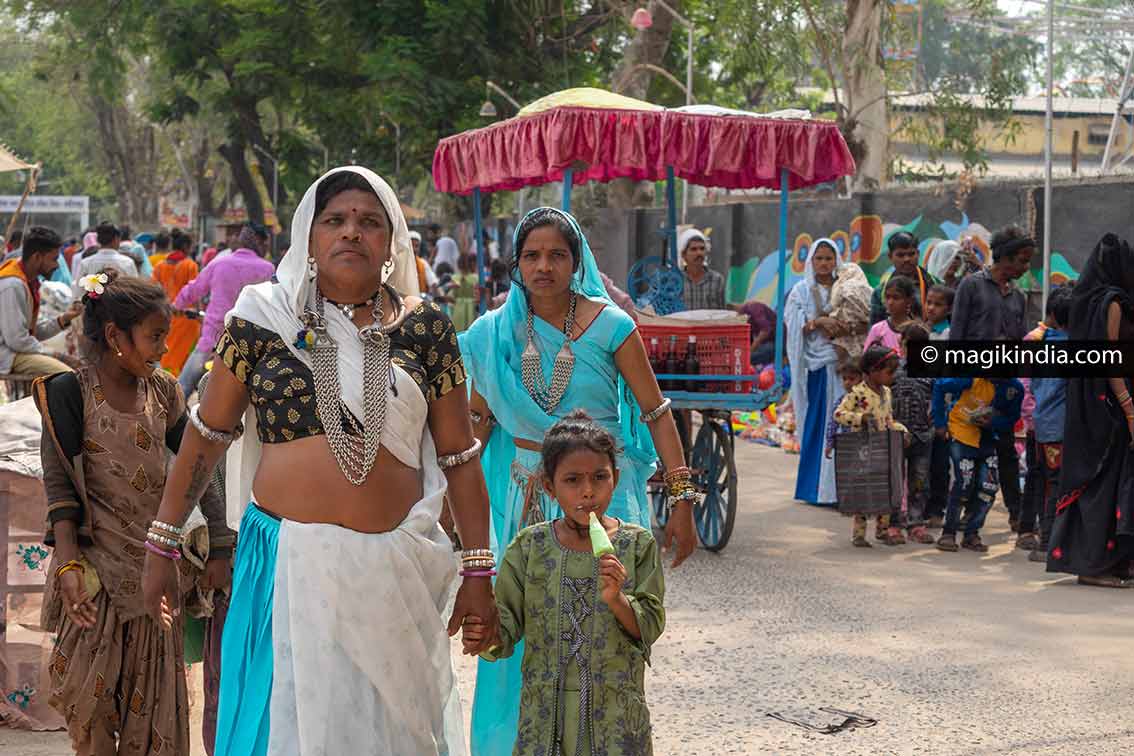
The festivities usually include a carnival and several tribal markets (haat) where all kinds of products are displayed. Haats originally served as a social bond when tribes lived in isolated villages. In present-day India, these adivasi markets still have their place and reflect the culture and traditions of a community.

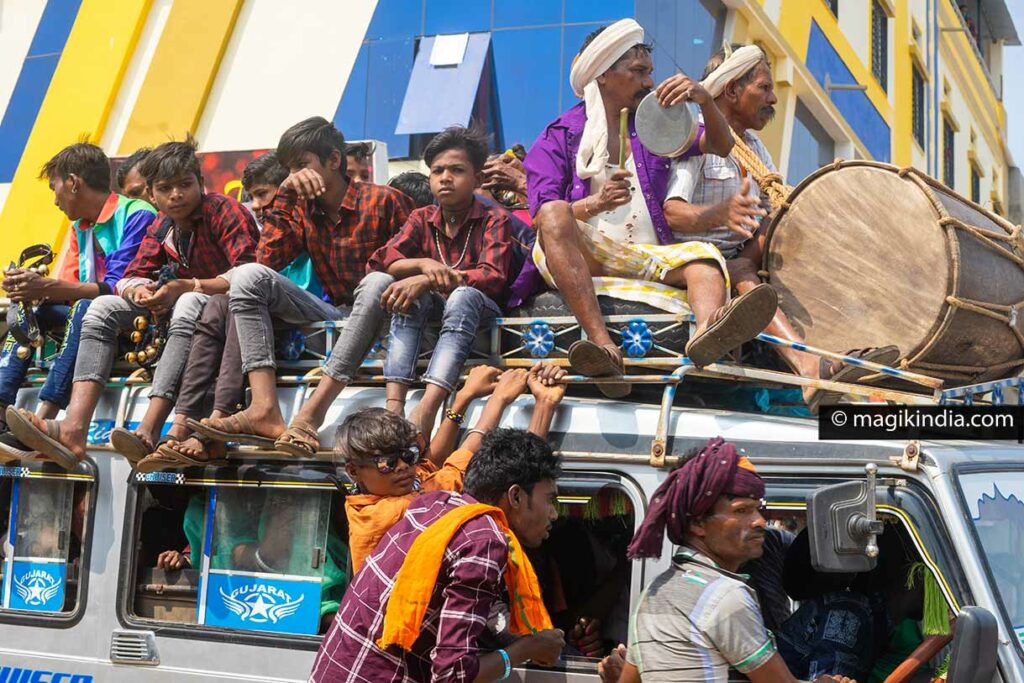
Participants in the Bhagoria festival arrive in groups in ultra-crowded jeeps or mini-vans; some are cling to the doors, others are perched on the roof of the vehicle with their musical instruments.
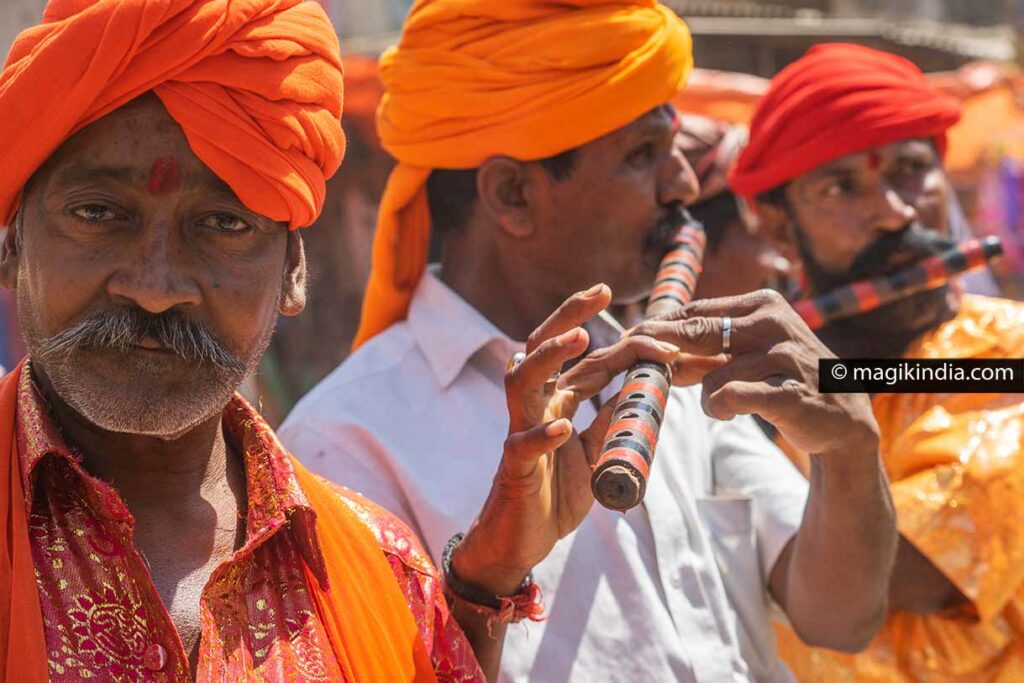
Descending from the jeeps, the Rathwa men and women form a circle and begin the “Bhagoria Ghair”, a rhythmic ecstatic dance, accompanied by flutes and percussions.
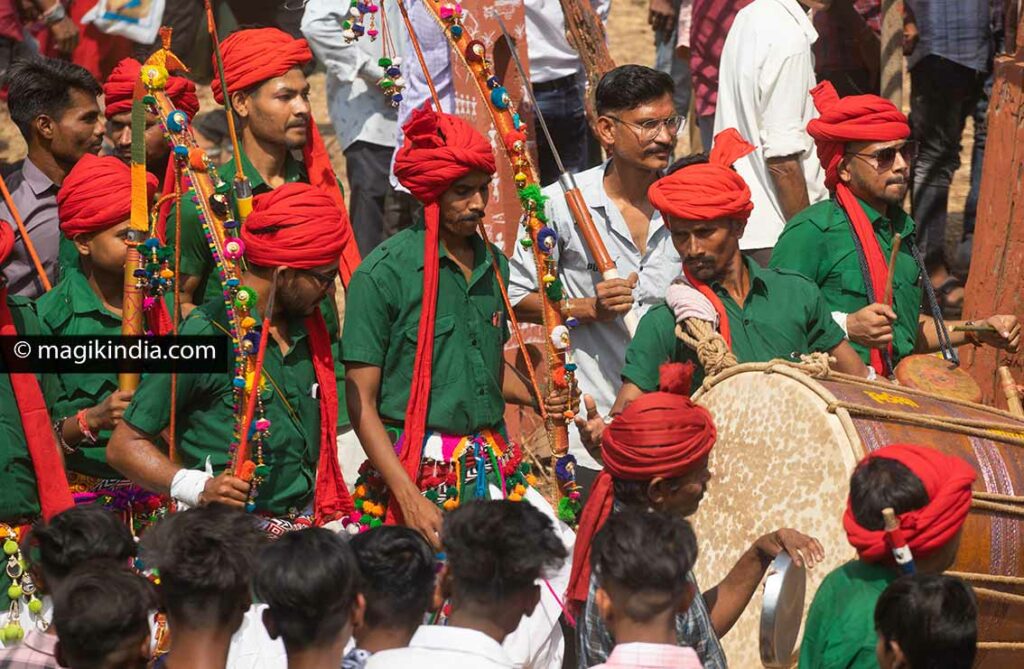
The men twirl and brandish coloured bows, while emitting a kind of war cry, a reminder perhaps of their indigeneity. This frenetic round of dancers and musicians quickly becomes intoxicating. Just as I mentioned for the Gavari of Bhils, the Bhagoria Ghair transports you to another world, to the roots of India.
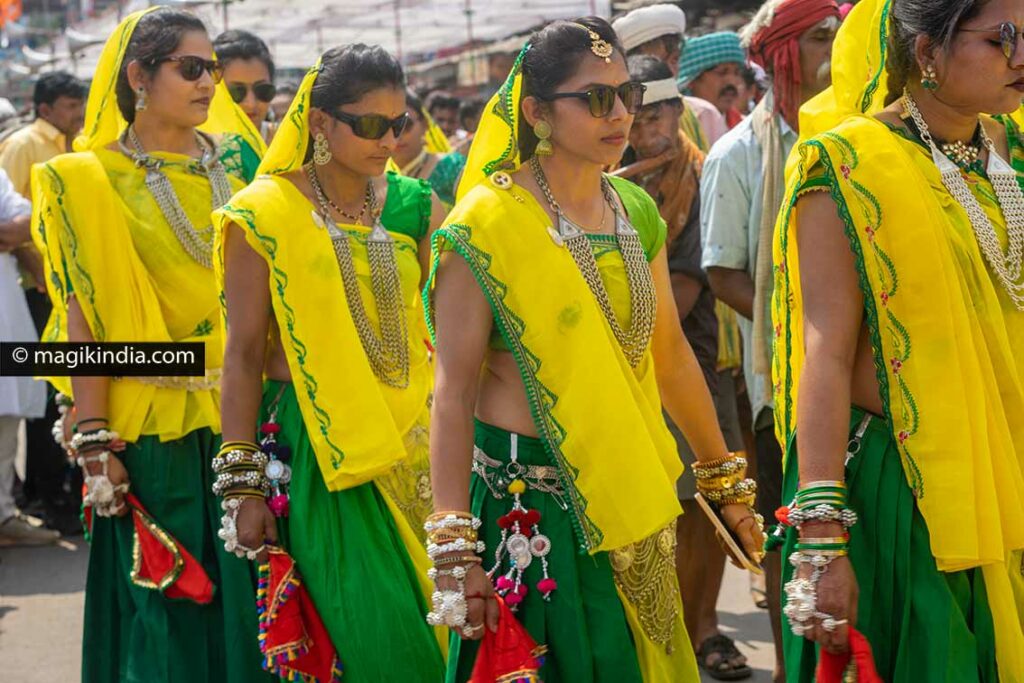
After this ritual, the procession walks for a while towards the fair and then the members end up separating; groups of young men and women walk apart (often in clothes of the same colour) and parade through the streets of the village.
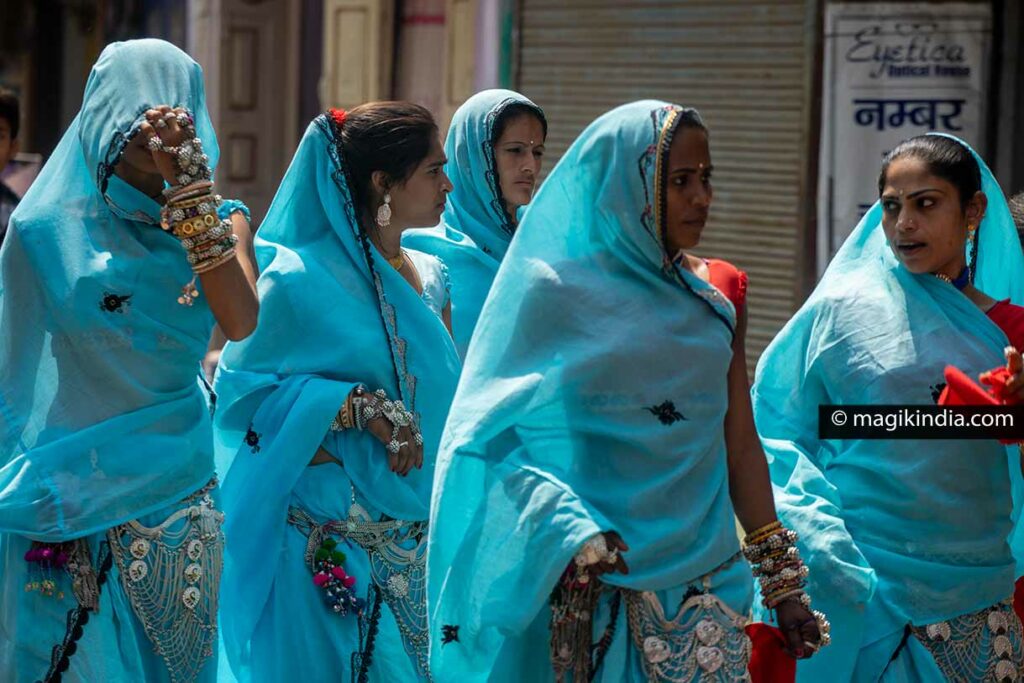
While the majority of young men have traded in their lungi-pagdi (loincloth, shirt and turban) for Western-style clothes (but why?), the young women continue to wear the traditional Rathwa costume: a set of lugda-ghagra (a skirt, a crop top and a veil) highlighted by exuberant silver jewelry!
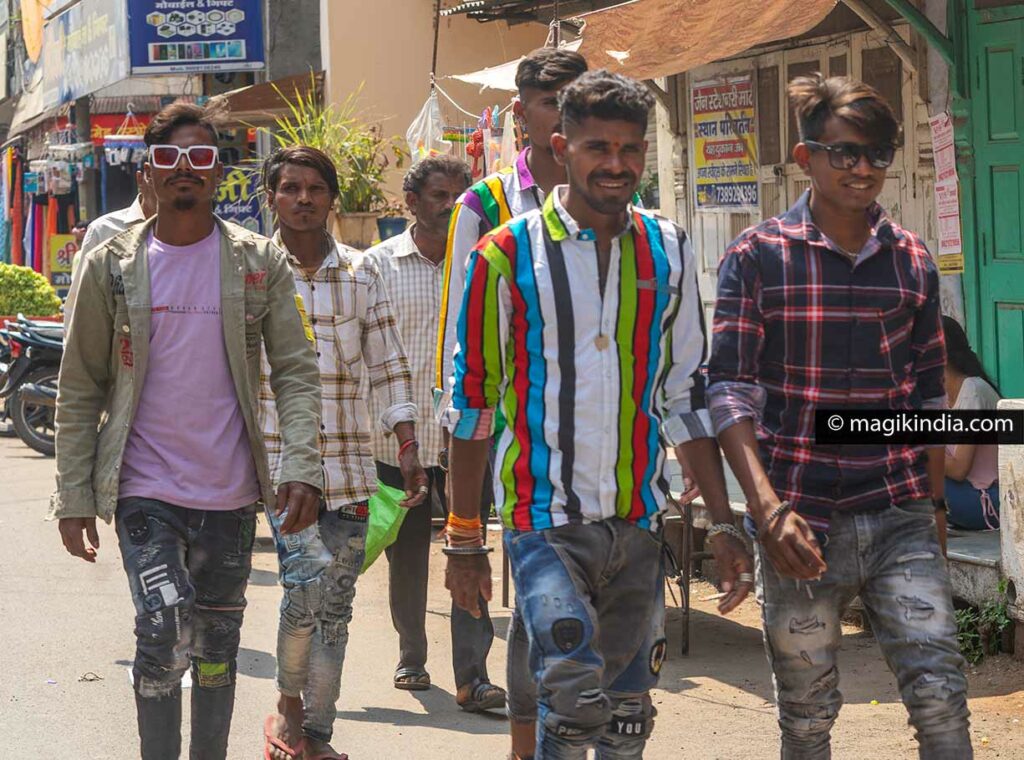
The silver ornaments of the young women consist of a “haaidi Haar”, a wide chain-necklace, multitudes of bracelets called “vank”, a “hathphul” (hand jewellery) and a kandora, a large chain placed on the left hip.
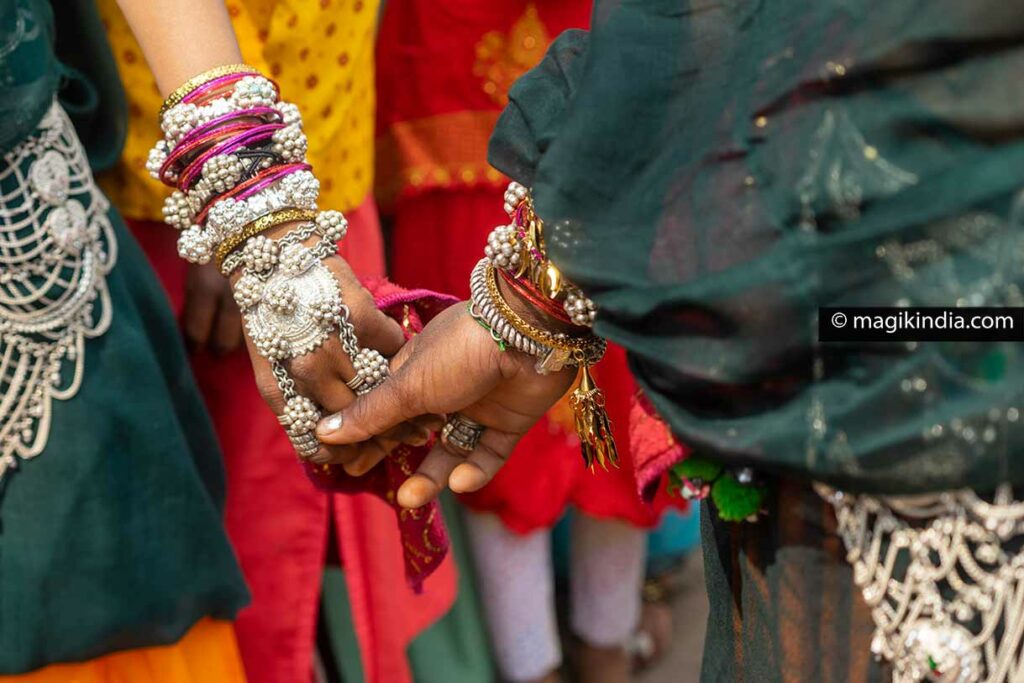
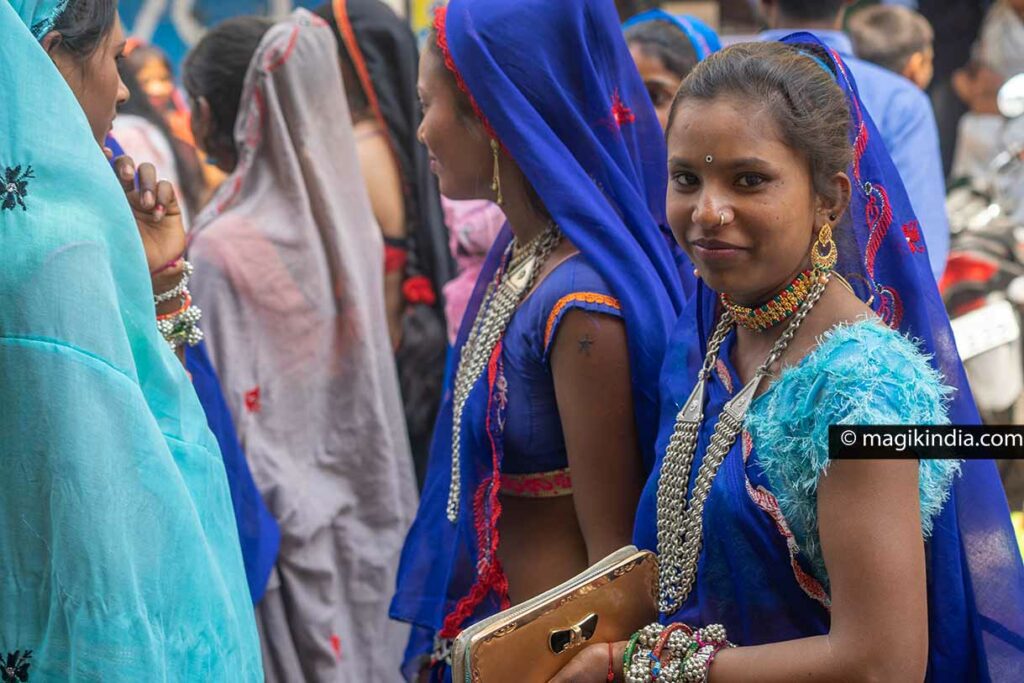
The Bhagoria fair ends on the day of Holika (the day before the Holi festival)… And, from there, other festivities take over, all as surprising and fascinating as this festival… To be continued….
Jai Adivasi !

